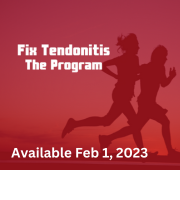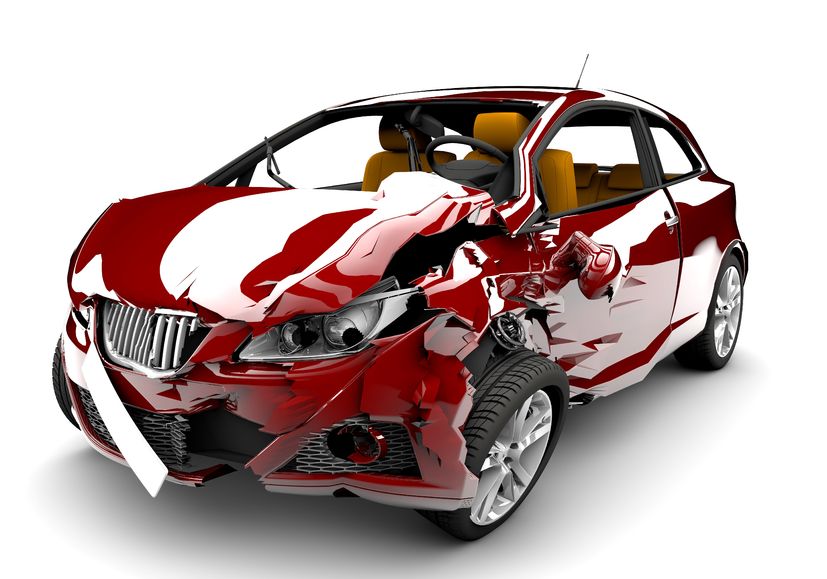What Is Patellar Tendonitis?
And Sources of Patella Pain
It is important to know that the pain from your Patellar Tendonitis can come from two different directions.
This is commonly called Jumper's Knee when patella pain shows up in athletes. Athletes that jump a lot, unsurprisingly.
Patella Tendinitis symptoms can be from specific wear and tear damage, which causes a progressive dynamic of pain and inflammation. This is primarily caused by overuse and repetitive motion.
Or it can have that exact same dynamic of increasing inflammation and pain, just without the tissue damage. This is primarily caused by either the early days of overuse and repetitive strain injury, and/or be due to Patellar Femoral Syndrome.
If you want to get rid of your Patella Tendonitis pain, you need to deal with one, or both, of those factors.
Feb 1st or sooner!

Patellar Tendonitis Symptoms
Other than location, signs and symptoms of patellar tendinitis are not different from other Tendonitis issues:
- Pain in the area of the tendon
- Pain will be experienced early in the day or workout and then after the workout is completed or as the day winds down
- The knee will feel "tight"
- Possible swelling of the tendon
- Involved muscles tight, sore, achey, painful. (Patella Tendonitis usually is centered just at the patella, but examination will show sore, tender muscles)
- May feel and even hear the tendon literally 'squeaking'
See the Tendonitis Symptoms page for a deep explanation of each of the usual symptoms of tendonitis.
Make sure that you understand the underlying cause of Tendonitis. See: What Is Tendonitis?
Development of Patella Tendonitis Symptoms
Anybody can experience symptoms of patellar tendonitis. And it can look a variety of ways.
Maybe you're pain free one day, then in significant pain the next.
Maybe it starts out small, then gets more and more noticeable (until it becomes debilitating)
Maybe you'll have 'creaky', squeaky knees. Maybe you'll just have pain at/under the knee cap. Maybe you'll have pain allover.
Every body part shares the 'usual' factors and flavors of tendonitis symptoms, and each body part has it's specific behavior due to it's location and the physiological and kinesthetic requirements on that location.
Patella tendonitis is a function of all the regular factors that make up the tendonitis mechanism.
Specifically to the knee, though, Patella Tendonitis symptoms are (additionall) caused by:
- Tight Tensor Fascie Latte (TFL) muscle that connects to the Illio-Tibial (IT) Band that runs down the leg and connects to the outer side of the knee.
- That tightness puts tension on the knee.
- Tight hamstrings and tight quads and tight (or loose) adductors all play a role in the 'balance' and function of the knee, including adding tightness that compresses the knee joint.
- When the knee joint gets compressed, it tells the brain there's a problem, and the brain tries to protect you by....tightening all the muscles connected to/by the knee.
And then you stand, walk, run, jump, etc. And the pain mechanism quickly or slowly increases, the pain you feel gets worse and worse, and the body continues to try to compensate...which makes things worse.
Patellar Tendonitis
Causes of Patella Pain
Ultimately Patella Tendonitis is just like any other Tendonitis.
There is use and overuse of the structure, increasing tightness of muscles and increasing constriction of connective tissue IN THE ENTIRE AREA. This leads to site specific pain.
Patellar Tendonitis is simple to deal with -if- you identify the actual cause of the pain.
Patellar Femoral Syndrome consists of the quad muscles on the front of the thighs not working with proper muscle balance/strength. This can lead to tendonitis, bursitis, and reduction of speed, agility, and stability.
Correct strengthening of the hips and legs can make the patella pain go away FAST.
Because in that case, the pain is from irritation and a concerned nervous system, not any actual damage. Correct the balance and presto, your body will be happy again!
Same thing if hamstring tendonitis dynamic is playing a role in the pain in the patella.
Point being, just because the patella hurts, doesn't mean the patella is the source of or cause of any pain.
True Tendonitis that consists of damage and irritation to the patellar tendon and ligament structure is a different matter entirely.
In that case, you have to kick out the Process of Inflammation, make sure that you have enough protein and other nutritional building blocks so you can quickly heal any damage, and remove some of the factors leading to the pain and problem (like tight muscles and connective tissue).
Patellar Tendonitis and Stretching
Studies like this one from the American Journal Of Sports Medicine titled: Intrinsic Risk Factors for the Development of Patellar Tendinitis in an Athletic Population indicate that the primary risk factor for the development of Patella Tendonitis is muscles that are too tight and need to be stretched.
Which makes total sense that structures that are TOO TIGHT would cause problems! Tightness causes tension. Tension pulls things apart. The nervous system notices that and tells those muscles to work harder to resist that tension.
Unfortunately, the nervous system isn't smart enough to know that RELAXING those structures is a better option than making them tighter. And tighter. And tighter.
Pre-Patellar Bursitis
Pre Patellar Bursitis is a DIFFERENT kind of pain.
The pre patellar bursa essentially sits between the patella and the patellar tendon, and is designed to reduce friction.
But get it irritated, and you're in for a FUN time until it heals, and that pain and associated injury can set a Tendonitis dynamic in motion!
Patellar Dislocation
Patellar Disclocation can set a Tendonitis dynamic in motion.
Patellar Tendonitis Treatment
Most sites on the web, like About.com's Orthopedic section on Patella Tendonitis give the usual rundown on treating Tendonitis
- Ice
- Rest
- See a doctor
- Corticosteroid shots
- NSAIDS
Etc. (That's pretty much what you'll see on every website out there, all the same.)
Go ahead and try those, hopefully it will work for you.
To treat EFFECTIVELY, you have to use the RIGHT methods. There are many ways to ice, for instance.
Some methods are just more effective than others.
To lower the pain of Patellar Tendonitis, and to start to reverse the Pain Causing Dynamic, I suggest that you ice as described on the How To Reduce Inflammation page.
To take care of the muscle imbalance that can cause patella pain and the Patellar Femoral Syndrome, get this ebook from my friend Bart about hip tightness and muscle balance and how to fix patellar tendonitis caused by that.
Bart has a lot of information on his website. It's good information, he's a great athletic trainer, and I like and trust his work and his info.
Return to the top of this Patellar Tendonitis page.
Go to the main Tendonitis page.
Go to the TendonitisExpert.com homepage.
